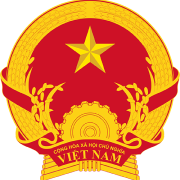
The war on service fees has heated up
The operators have been launching attractive service packages with low fees and high capacity to lure customers.
As a result of the price war, 3G service packages have become expensive and slow, while 4G packages are now cheap and fast.
However, service providers have gone too far. There are service packages with no capacity limitation with fees of VND400,000-500,000 a year.
At a recent meeting with foreign specialists about telecom market management, the Telecommunication Agency admitted the existence of these ‘destructive’ service packages.
A question has been raised about telcos’ business performance when 3G services cannot bring profits as expected, while they just beginning 4G services and profit remains unclear.
Meanwhile, experts believe now is the the right time for Vietnam to think of 5G technology.
Thieu Phuong Nam, CEO of Qualcomm Indochina, said the production cost for 1GB for 4G technology is lower than 3G, while the production cost for 5G technology would be even lower. However, there are still no exact figures available.
It is estimated that the production cost for 1GB of 4G technology is 70 percent lower than 3G, while the investment rate on BTS is nearly the same.
With 4G, the profit telcos can make is not lower than 3G, but it brings higher benefits to customers and serves the strategy on digital economy development.
5G will not only target smartphones, but smart cars which consume data volume equal to 70 smartphones. This will be a big source of revenue for network operators.
Laptops and PCs will also be the targets. Asus, HP and Lenovo are expected to market laptops like smartphones to run on Snapdragon by the end of the year.
The demand for data will be several times higher than for data consumed by smartphones.
And IoT, not smartphones, will be the major source of income for 5G.
Nam said for 5G, Vietnam should go ahead or at least walk abreast with other countries, and should not start later than others.
According to Nam, smartphone manufacturers plan to have 5G smartphones by the first half of 2019.
Nam has repeatedly urged Vietnam to begin preparing for 5G and said the standards for 5G should be completed in 2018.
With 4G, the profit telcos can make is not lower than 3G, but it brings higher benefits to customers and serves the strategy on digital economy development.
5G will not only target smartphones, but smart cars which consume data volume equal to 70 smartphones. This will be a big source of revenue for network operators.
Laptops and PCs will also be the targets. Asus, HP and Lenovo are expected to market laptops like smartphones to run on Snapdragon by the end of the year.
The demand for data will be several times higher than for data consumed by smartphones.
And IoT, not smartphones, will be the major source of income for 5G.
Nam said for 5G, Vietnam should go ahead or at least walk abreast with other countries, and should not start later than others.
According to Nam, smartphone manufacturers plan to have 5G smartphones by the first half of 2019.
Nam has repeatedly urged Vietnam to begin preparing for 5G and said the standards for 5G should be completed in 2018.
